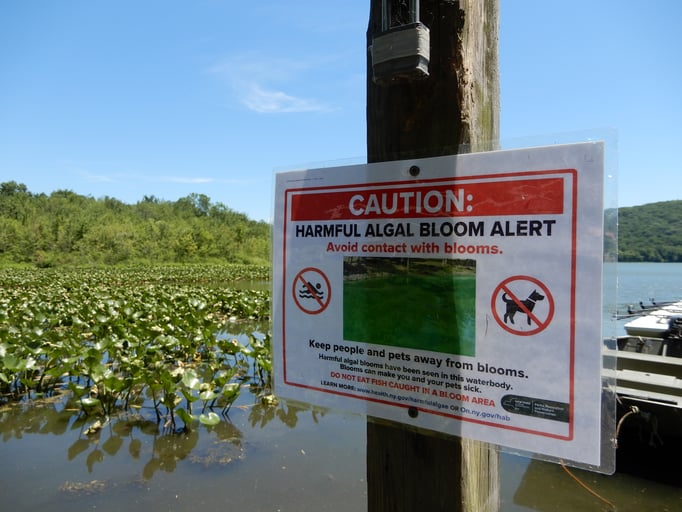Posted on Mar 13, 2025
The Hidden Costs of Harmful Algal Blooms (HABs) on Communities

Harmful algal blooms (HABs) are more than just an eyesore on the water’s surface. These toxic cyanobacteria outbreaks wreak havoc on ecosystems, compromise public health, and drain local economies.
While the green scum covering a lake might fade with the seasons, the hidden costs of HABs ripple through communities for years, affecting property values, tourism, and quality of life. Understanding these impacts is the first step toward taking meaningful action to protect our lakes and the lifestyles they support.
The Social and Economic Toll
1. Declining Property Values
Homes near lakes plagued by HABs experience significant drops in property value. No one wants to live near a lake that smells foul, looks unsightly, or poses health risks. According to a study from the Environmental Protection Agency (EPA), property values can decline by as much as 25% when water quality deteriorates due to algal blooms.
2. Loss of Recreational Opportunities
HABs make lakes unsafe for swimming, boating, and fishing—the activities that define the Lake Lifestyle. Beach closures, health advisories, and canceled events drive tourists and locals away, leaving communities without access to their cherished lakeside activities.
3. Economic Impact on Local Businesses
Tourism-driven businesses, such as restaurants, bait shops, and boat rental companies, suffer steep revenue losses during algal bloom outbreaks. Municipalities may also face increased costs for water treatment and infrastructure maintenance.
4. Public Health Risks
HABs release toxins that can cause skin irritation, gastrointestinal issues, and even liver damage in humans. Pets and wildlife are particularly vulnerable, with numerous cases of illness or death linked to toxic algae exposure.
Environmental Consequences
1. Ecosystem Disruption
HABs deplete oxygen levels in the water, leading to hypoxia and massive fish kills. These events disrupt food webs and harm biodiversity, leaving long-term scars on aquatic ecosystems.
2. Perpetuation of the Eutrophication Cycle
When HABs die off, their decaying biomass sinks to the lakebed, releasing nutrients that fuel future blooms. This creates a vicious cycle of degradation that is difficult to break with conventional management methods.
A Call for Proactive Management
The 2022 Government Accountability Office (GAO) report highlights the urgent need for proactive, science-based approaches to combat HABs and their widespread impacts. The report criticizes traditional reactive treatments like biocides, which provide only temporary relief while exacerbating long-term problems.
Instead, it emphasizes solutions that address the root causes of eutrophication and restore ecological balance.
How Clean-Flo Tackles HABs
Clean-Flo’s Lake Management ACTION Plans offer a transformative approach to managing HABs and preventing their recurrence. Our strategies include:
- Restoring Oxygen Levels: Advanced oxygenation systems, like our proprietary RADOR technology, disrupt nutrient recycling and prevent hypoxia, cutting off the conditions that fuel HABs.
- Reducing Sediment Nutrients: Bio-dredging techniques remove nutrient-rich sediment from the lakebed, eliminating the primary food source for harmful algae.
- Balancing the Ecosystem: By promoting the growth of beneficial algae and revitalizing food webs, we help lakes achieve long-term ecological stability.
Invest in the Health of Your Lake
The hidden costs of HABs are too great to ignore. It’s time to move beyond temporary fixes and invest in solutions that deliver lasting results. Clean-Flo’s innovative, root-cause-focused strategies align with the GAO’s recommendations for sustainable lake management.
Download the Lake Management ACTION Plan E-Book
Discover how Clean-Flo’s solutions can protect your community from the devastating impacts of HABs. Download our Lake Management ACTION Plan e-Book today to learn more about the innovative technology, science, strategies, and success stories behind effective lake restoration.


